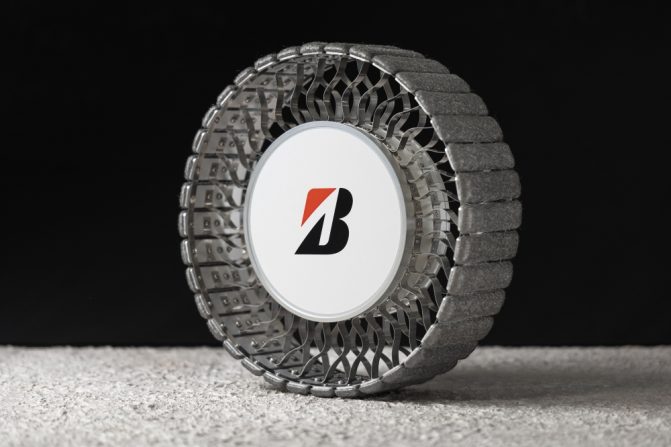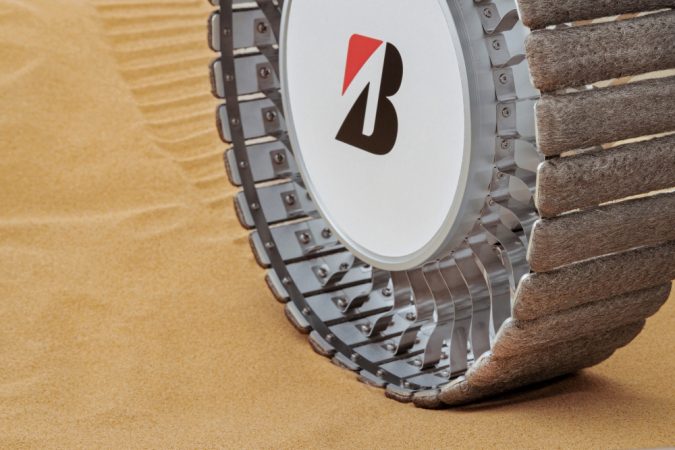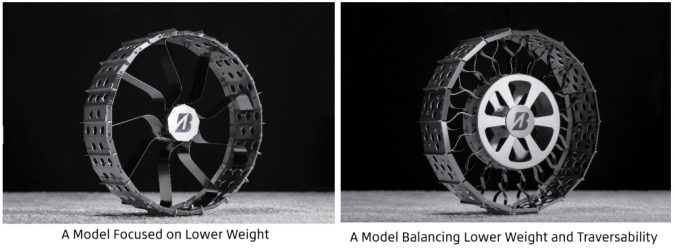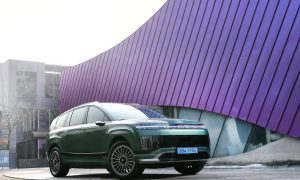Across its 94-year history, Bridgestone has developed a reputation as one of the world’s premier tyre manufacturers. Known for safety and durability, the Japanese giant has been on an innovation drive recently, most notably in its “AirFree” development quest. As part of this mission and Bridgestone’s greater commitment to mobility of all kinds, the company has developed innovative lunar rover tyre technology. Here’s everything you need to know about Bridgestone’s lunar rover tyres.
The Key Characteristics of Lunar Rover Tyres
Obviously, the tyres required for lunar exploration are significantly different from those worn by cars. Firstly, they must be airless due to space becoming a vacuum, meaning conventional tyres wouldn’t work due to their reliance on air pressure.
Secondly, they must be able to cope with the strenuous conditions of the Moon. These include rocks or other obstacles, as well as cosmic rays and temperatures ranging from 120°C to -170°C.
Lastly, the lunar surface is covered with fine sand known as “regolith”. To avoid the tyres sinking, they have a large surface area. The “Luna Terrace” in the Tottori Sand Dunes in Japan is used to simulate the sandy surface of the Moon.
Technologies Used in Bridgestone’s Lunar Rover Tyres
The first-generation tyre featured a soft, metal-based felt material on the tread area inspired by the footpads of camels to boost traction. The second iteration of Bridgestone’s lunar rover tyre (shown above) adds a skeletal structure in the form of thin metal spokes. This structure allows the tyres to flexibly change shape while maintaining the durability required for lunar travel.
Thanks to developments in technology, Bridgestone has been able to optimise the shape and thickness of the spokes. Another development seen on the second-generation tyre, revealed in 2024, is the division of the tread segment in the rotational direction, which aids durability and traction.
Two variants of Bridgestone’s lunar rover tyre (shown below) were recently revealed. With a focus on lower weight, they are more suited to small and medium-sized rovers.
For the lunar rover tyres, Bridgestone recently won “Tire Concept of the Year” in the “Tire Technology International Awards for Innovation and Excellence 2025”.
The Rationale Behind The Development
No, Bridgestone is not ditching roadgoing tyres for rubberless rover ones, but the lunar tyres play an important role in living up to some of the company’s key aims. Firstly, the development of rover tyres is an extension of the “AirFree” technology, an exploratory part of Bridgestone’s business plan. The tyre manufacturer also hopes that its learnings in the lunar development phase will bring benefits to tyres used on this planet.
The rover tyres are in line with Bridgestone’s “Tyres carry life” principle, and the Japanese company aims to become essential to the future of mobility by taking on a challenge that represents the extremes of human activity.
Lastly, the project forms part of Bridgestone’s commitment to innovation, detailed in its E8 Commitment, while it also demonstrates the company’s pursuit of excellence to its partners alongside attracting new connections with the space industry.






